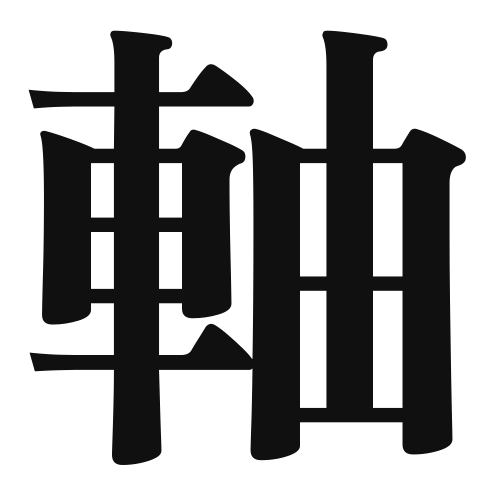1. Overview of Meaning
The kanji “軸” (jiku) primarily means “axis” or “shaft.” It refers to a central line or point around which something rotates or is organized. In a broader sense, it can also imply a core concept or main theme in various contexts.
2. Formation and Radicals
The kanji “軸” is composed of two parts: the radical “車” (kuruma), which means “car” or “vehicle,” and the phonetic component “木” (ki), which means “tree.” This combination suggests a connection to movement and stability, as an axis is essential for the functioning of wheels and vehicles.
3. Examples of Usage
Common words that include “軸” are:
- 軸線 (じくせん, jikusen) – axis line
- 軸足 (じくあし, jikuashi) – pivot foot
In everyday conversation, you might say:
この図の軸を見てください。
(Please look at the axis of this diagram.)
4. Synonyms and Antonyms
Similar kanji with related meanings include:
- 中心 (ちゅうしん, chūshin) – center, which refers to the middle point of something.
- 基準 (きじゅん, kijun) – standard, which indicates a basis for comparison.
Antonyms include:
- 周辺 (しゅうへん, shūhen) – periphery, which refers to the outer limits or edge of an area.
5. Cultural and Historical Background
The concept of “軸” is significant in Japanese culture, particularly in fields like art and design, where balance and centrality are essential. It is often used in proverbs and idiomatic expressions, such as:
軸がぶれない (じくがぶれない, jiku ga burenai) – to remain steady or not lose focus.
This reflects the importance of having a strong foundation or core principle in various aspects of life.
